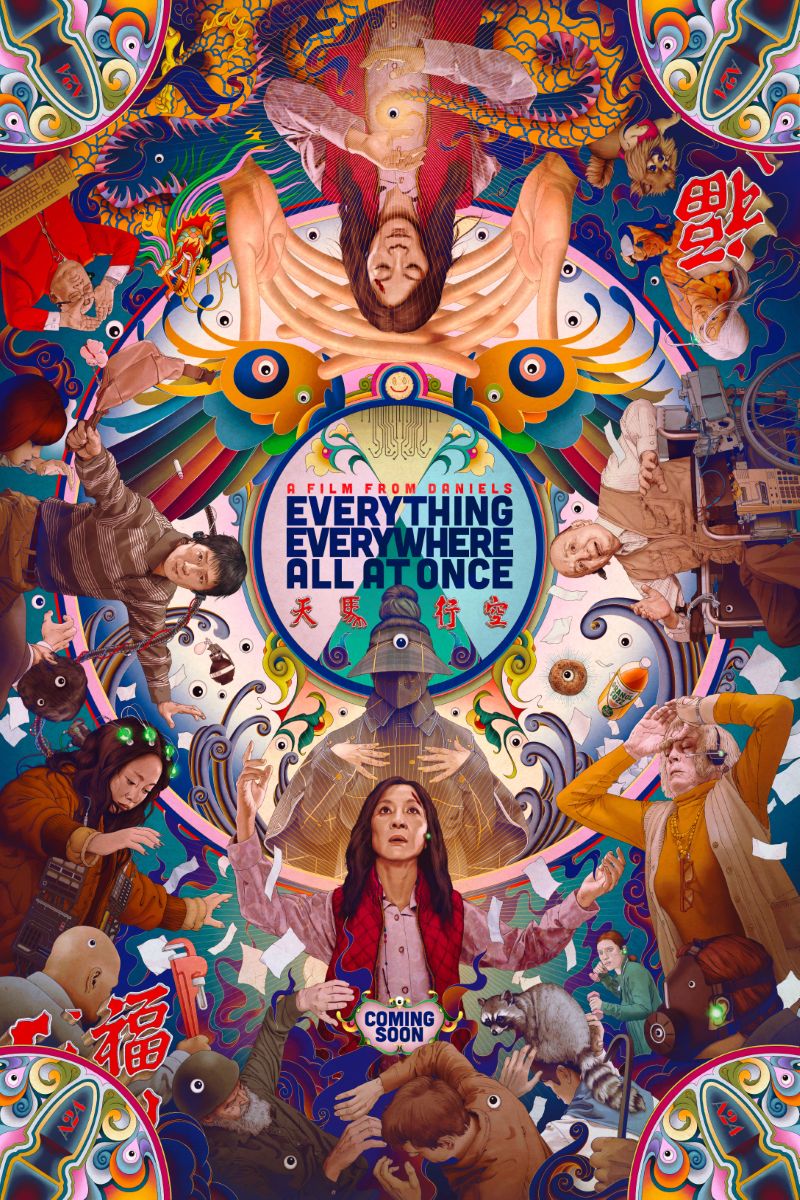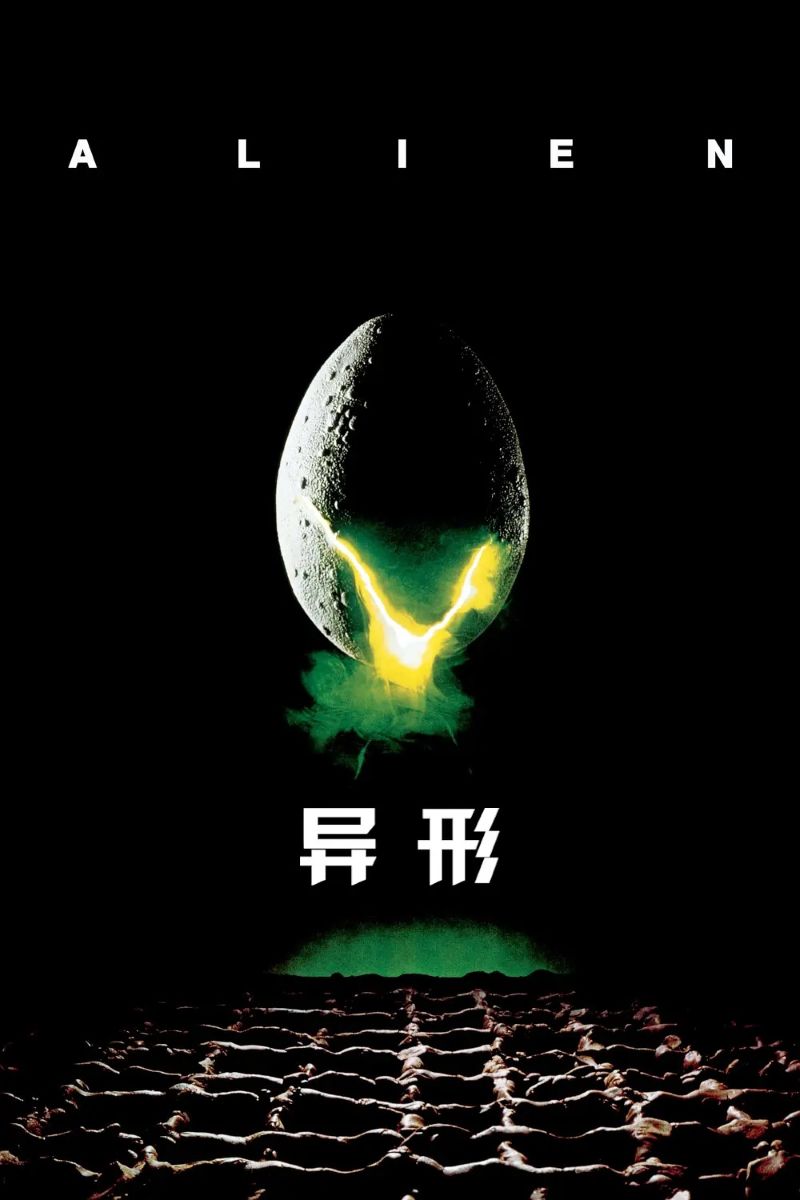
Everything Everywhere All at Once
Everything Everywhere All at Once
A groundbreaking sci-fi comedy-fantasy film starring Michelle Yeoh as a Chinese-American immigrant mother who must save the world across the multiverse. Directed by the Daniels, this film redefines the concept of action heroes through its profound exploration of Asian American women, intergenerational relationships, identity, and family dynamics.
主演
🎥 影评与解读
In the cinematic universe of 2022, “Everything Everywhere All at Once” emerged as a brilliant supernova that completely revolutionized our understanding of science fiction, action films, and feminist cinema. This film by directors Daniel Kwan and Daniel Scheinert (the Daniels), through Michelle Yeoh’s portrayal of Chinese-American immigrant mother Evelyn Wang’s multiverse adventure, not only created visual spectacles but profoundly explored Asian American women’s identity struggles, family relationship complexities, and the infinite possibilities of love. This seven-Oscar-winning work wrapped its most tender core in an absurdist surface, giving unprecedented voice to middle-aged women, immigrant families, and queer communities.
The Birth of a Middle-Aged Female Hero
The most revolutionary achievement of “Everything Everywhere All at Once” lies in placing a middle-aged Chinese-American woman at the center of action heroism. Evelyn Wang is not a traditional superhero—she’s an exhausted mother running a laundromat, facing tax audits, marital crisis, and a fractured relationship with her daughter. This setup itself represents a fundamental subversion of Hollywood action film traditions.
As Michelle Yeoh stated: “When people think of ‘superhero’… it always seems like the men come first. Why can’t we older women be superheroes?” This question directly addresses ageism and sexism in action cinema. Evelyn’s heroic journey doesn’t rely on a young body or traditional masculinity, but on her resilience as a mother, adaptability as an immigrant, and emotional intelligence as a woman.
Originally written for Jackie Chan with Yeoh intended as merely the wife character, the Daniels’ decision to refocus on a female protagonist not only made the story more original but challenged traditional action film conventions. When Yeoh first read the script, she “breathed a huge sigh of relief: finally, here was a film that put a middle-aged mother in the action hero role.”
The Multiple Identities of an Immigrant Mother
Evelyn Wang’s character design profoundly reflects the complex circumstances of first-generation immigrant women. She must maintain family livelihood while handling cultural adaptation challenges; satisfy traditional parental expectations while understanding her American-born daughter’s values. This tension of multiple identities finds concrete expression in the multiverse setting.
Across different universes, Evelyn becomes a kung fu star, opera singer, chef, or janitor. These parallel lives serve as both philosophical contemplation of personal choices and metaphor for immigrant experiences. Every immigrant has faced crucial moments of choice—stay or leave, maintain tradition or embrace new culture, pursue personal dreams or shoulder family responsibilities. Evelyn’s various possibilities across the multiverse represent the inner “what ifs” of countless immigrant women.
Through Evelyn’s perspective, the film shows how immigrant women survive in cultural cracks. She belongs neither completely to Chinese culture (due to long-term U.S. residence) nor fully integrates into American society (due to language barriers and cultural differences). This marginal identity, though painful, also grants her unique adaptability and cross-cultural wisdom.
Intergenerational Trauma and Healing
The film’s exploration of mother-daughter relationships forms its most moving core. The relationship between Evelyn and daughter Joy (Stephanie Hsu) is filled with typical intergenerational conflicts—language barriers, cultural differences, sexual orientation identity, lifestyle choices. These conflicts are extremized in the film as threats of universal destruction, yet their emotional core remains utterly real.
Joy’s alternate identity as “Jobu Tupaki” represents the despairing younger generation who choose nihilism when unable to gain parental understanding. The everything bagel becomes a visual symbol of this despair—all possibilities compressed into nothingness, all hope devoured. This setup cleverly elevates family conflicts to existentialist philosophical contemplation.
Evelyn’s ultimate awakening comes through unconditional acceptance of her daughter. She realizes that across countless parallel universes, she would choose to be with Joy, even if it meant choosing the most failed life. This expression of maternal love transcends cultural differences and generational gaps, pointing toward universal values of human emotion.
Gentle Presentation of Queer Identity
The film’s handling of Joy’s queer identity is both authentic and empathetic. Her girlfriend Becky (Tallie Medel) is not merely a supporting character but an important element in family dynamics. Evelyn’s process of accepting her daughter’s sexual orientation reflects challenges faced by many traditional families.
The film avoids simplifying or dramatizing queer identity. Joy’s pain stems not only from sexual orientation but from inability to gain complete understanding and acceptance from her mother. Her despair is multilayered—identity confusion as a second-generation immigrant, existential anxiety as a young person, social pressure as a queer individual.
The final reconciliation scene is particularly moving because it’s achieved not through grand speeches or preaching but through Evelyn’s sincere listening and emotional resonance. Her choice to put on googly eyes and experience the world through her daughter’s perspective demonstrates an empathy more powerful than any words.
Breakthrough in Asian American Women’s Media Representation
The contribution of “Everything Everywhere All at Once” to Asian American women’s representation is historic. Michelle Yeoh became the first Asian actress to win the Academy Award for Best Actress—a breakthrough representing not only personal honor but victory for the entire Asian community. Asian characters in the film are no longer exotic objects under Western gaze but complex, three-dimensional human individuals.
Evelyn’s character breaks Western media stereotypes of Asian women. She is neither a mysterious Oriental beauty nor a tiger mom-style strict mother, but a flesh-and-blood ordinary person. She makes mistakes, feels confused, gets angry, and shows tenderness. This humanized portrayal opens new possibilities for Asian women’s images in mainstream media.
The film’s success also proves that Asian-themed stories possess universal appeal. Rather than diluting Asian cultural elements to cater to Western audiences, it gained broader resonance by authentically showcasing Asian family cultural characteristics. This success provides valuable lessons for future Asian filmmakers.
Philosophical Metaphor of the Multiverse
The film’s multiverse setting serves not only as visual spectacle but profound philosophical metaphor. Each parallel universe represents a possible choice, a different way of life. This setup makes audiences contemplate: if we had made different choices, what kind of people would we have become?
Evelyn’s experience in the rock universe carries particular philosophical significance. In that universe, she and husband Waymond become two rocks communicating only through subtitles. This minimalist communication method returns them to the essence of relationship—pure emotional connection without language barriers or cultural gaps, only the most primitive love.
Through its absurdist exterior, the film packages profound philosophical contemplation. Seemingly nonsensical elements like hot dog fingers, raccoon cooking, and googly eyes actually explore fundamental questions of identity, survival value, and existential meaning. This combination of profundity with absurdity makes serious philosophical discussion lively and interesting.
Collective Healing of Family Trauma
The film focuses not only on mother-daughter relationships but deeply explores complex dynamics among three generations. Evelyn’s father (James Hong) represents traditional patriarchal authority, his prejudice against homosexuality reflecting conservative attitudes of older generations. However, the film doesn’t simply cast him as a villain but reveals his inner fears and confusion.
Evelyn is both daughter and mother, bearing dual expectations and pressures. She must satisfy her father’s traditional expectations while understanding her daughter’s modern values. This sandwich generation predicament is a common experience for many first-generation immigrants. Through her growth, the film demonstrates how to break cycles of intergenerational trauma.
Final family reconciliation is achieved not through denying differences but accepting them. Evelyn learns to both respect her father’s views and support her daughter’s choices. This balance isn’t compromise but true wisdom—recognizing that love can transcend disagreements, understanding can coexist with differences.
Contemporary Social Emotional Healing
Against the backdrop of pandemic, social division, and global crisis, “Everything Everywhere All at Once” provides unique emotional healing. The film acknowledges the world’s absurdity and pain but chooses to respond to despair with love and understanding. This attitude represents neither blind optimism nor passive nihilism but mature realism.
The film’s success partly stems from its precise grasp of contemporary social anxieties. Multiverse chaos reflects information age choice overload, the everything bagel symbolizes meaning’s nullification, while family relationship repair points toward possibilities for rebuilding connection. These themes particularly resonated during the pandemic.
The film’s ultimate message is: even in an apparently meaningless universe, we can still choose kindness and love. This choice isn’t escapism but courage to face reality. As Evelyn says, across countless possible worlds, she would choose to be with her family because love itself is meaning.
New Expression of Feminism
“Everything Everywhere All at Once” provides new paradigms for feminist film expression. It doesn’t demonstrate female power through opposing patriarchy but redefines power itself by showcasing women’s complexity. Evelyn’s power comes from her resilience, empathy, and unconditional love—qualities traditionally considered “feminine” that become key to saving the world.
The film also avoids idealizing women. Evelyn has flaws, makes mistakes, and sometimes hurts those she loves most. But this human complexity makes her character more authentic and powerful. Her growth isn’t from weak to strong but from fragmentation to integration, from confusion to clarity.
This feminist expression particularly suits Asian American women’s experiences. It doesn’t require Asian women to abandon cultural identity for feminist recognition, nor choose between tradition and modernity. Instead, it shows how to achieve personal growth while maintaining cultural roots, how to embrace change while respecting tradition.
Cross-Generational Women’s Collective Victory
Ultimately, the victory of “Everything Everywhere All at Once” belongs not only to Michelle Yeoh personally but to all previously overlooked middle-aged women, immigrant mothers, and Asian actors. It proves that films centered on marginalized groups can achieve mainstream success, stories with non-Western cultural backgrounds can move global audiences.
The film’s success opens new possibilities for the future. It tells the film industry that audiences hunger for diverse stories and characters, markets can accept and embrace difference. It also tells all marginalized groups that their stories deserve telling, their voices deserve hearing.
The Power of Unconditional Love
In the small space of that laundromat, Evelyn Wang completed her transformation from ordinary mother to cosmic hero. But her greatest victory wasn’t saving the multiverse but learning how to love—unconditionally, completely, across time and space. This power of love may be exactly the healing medicine our fractured world most needs.
Conclusion
“Everything Everywhere All at Once” stands as both a masterpiece of genre-blending cinema and a profound meditation on family, identity, and love. Through its celebration of a middle-aged immigrant woman as an unlikely action hero, the film challenges industry conventions while delivering universal themes that resonate across cultural boundaries.
The movie’s success demonstrates that authentic representation and emotional truth can achieve both critical acclaim and commercial success. By centering Asian American experiences without exoticizing them, by finding profound meaning in everyday family struggles, and by using spectacular visual effects to serve intimate emotional storytelling, the film creates a new template for how cinema can be both entertaining and meaningful.
Most importantly, “Everything Everywhere All at Once” reminds us that heroism comes in many forms, that ordinary people possess extraordinary capacity for love and growth, and that even in chaos, we can choose connection over isolation, understanding over judgment, and love over fear. In a world that often feels fragmented and overwhelming, the film offers hope that through patience, empathy, and unconditional acceptance, we can heal ourselves and our relationships one conversation, one moment of understanding at a time.
🏆 获奖与荣誉
- • Academy Award for Best Actress (Michelle Yeoh)
- • Academy Award for Best Director
- • Academy Award for Best Original Screenplay
- • Academy Award for Best Film Editing
- • Academy Award for Best Supporting Actor
- • Academy Award for Best Supporting Actress
- • Academy Award for Best Visual Effects
⭐ 评分与链接
相关推荐
讨论区
分享您的想法和观点
加入讨论
分享您的想法和观点
加载评论中...

